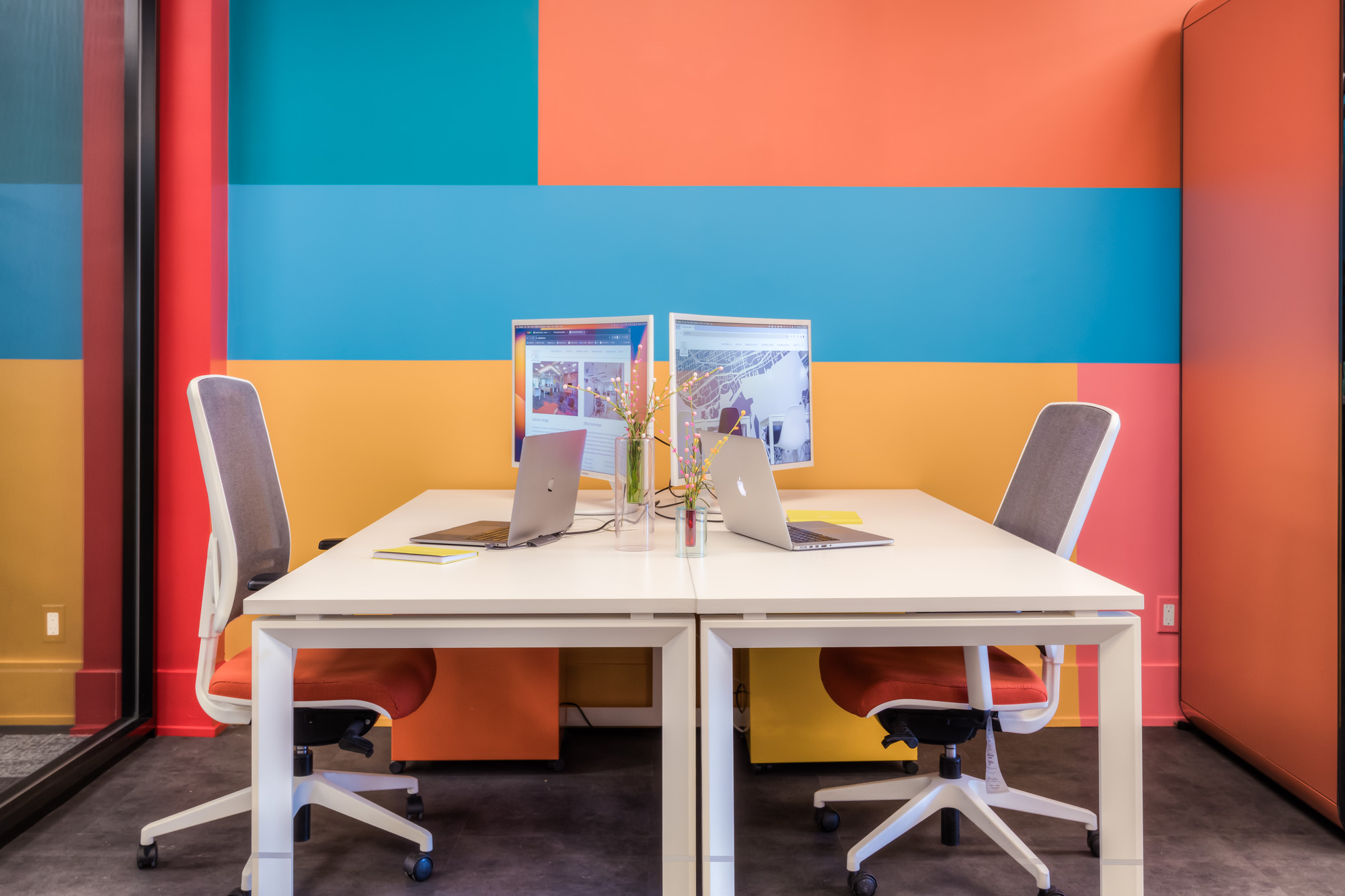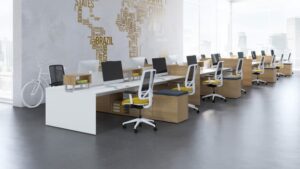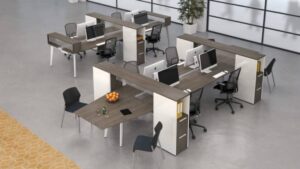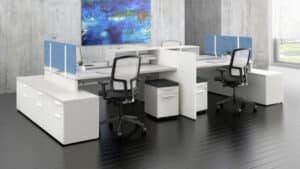Have you been in an office that feels welcoming, productive, and supportive for everyone regardless of age? Truly, this type of office interior design is a challenge that modern businesses can’t afford to ignore. Today’s workforce is more age-diverse than ever, blending Baby Boomers, Gen X, Millennials, and Gen Z under one roof. To truly harness the strengths of every generation, office leaders must embrace office interior design, commercial interior design, and corporate interior design strategies that prioritize inclusivity, flexibility, and above all, comfort. The right modular furniture is at the heart of this mission, making it possible to create a workspace where everyone can thrive.
What are the Generational Needs in Office Interior Design?
Office interior design that adapts to all ages begins with understanding the unique needs and preferences of each generation. Baby Boomers and Gen X often value stability, structure, and face-to-face collaboration. They appreciate private spaces, classic layouts, and sturdy ergonomic furniture that supports long hours at a desk. Millennials and Gen Z, on the other hand, crave flexibility, technology integration, and opportunities for collaboration and creativity. They’re drawn to open layouts, hot-desking, and furniture that can be easily reconfigured. A truly adaptive commercial interior design brings these preferences together, creating a balanced environment that supports both focused work and dynamic teamwork.
Flexibility as the Foundation of Corporate Interior Design
The foundation of age-inclusive corporate interior design is flexibility. Modular furniture is a game-changer, allowing spaces to be rearranged quickly to suit different tasks and group sizes. Sectional sofas, movable partitions, and adjustable tables enable teams to create private zones for deep work or open areas for brainstorming sessions. This flexibility is essential in office interior design, as it allows employees of all ages to find a workspace that matches their needs throughout the day.
The Role of Modular Furniture in Inclusive Workspaces
Ergonomic furniture is the great equalizer in the workplace. Adjustable chairs with lumbar support, height-adjustable desks, and monitor arms make it possible for employees of any age or body type to work comfortably and safely. These features are critical in commercial interior design because they reduce the risk of strain and injury, support good posture, and enable everyone to personalize their workspace. In a truly inclusive corporate interior design, you’ll find a variety of seating options, from classic task chairs to soft lounge seating, ensuring that every employee can find their perfect fit.
Technology Integration in Office Interior Design for All Generations
Technology integration is another pillar of adaptive office interior design. While younger generations may be digital natives, older employees can benefit from intuitive, user-friendly tech solutions. Wireless charging stations, smart boards, and accessible digital signage should be easy to use for everyone. By making technology accessible and providing training when needed, commercial interior design ensures that no one is left behind. This approach fosters collaboration and keeps communication flowing smoothly across all age groups.
Acoustic Comfort and Sound Management
Acoustic comfort is often overlooked, but it’s vital in corporate interior design for a multi-generational team. Older employees may prefer quieter, more private spaces, while younger generations might thrive in lively, collaborative zones. Incorporating acoustic panels, sound-absorbing materials, and flexible room dividers in office interior design gives everyone the choice between focus and interaction. This attention to sound control helps reduce distractions and supports mental well-being for all.
Accessibility and Universal Office Interior Design
Accessibility is a non-negotiable aspect of inclusive commercial interior design. Wide walkways, adjustable-height desks, and easy-to-reach storage make the office accessible for employees with mobility challenges. Leveraging universal design principles in corporate interior design ensures that the workspace is usable and comfortable for everyone, regardless of age or ability. Ergonomic furniture with intuitive adjustments further enhances accessibility, empowering all employees to work independently and confidently.
Communal Spaces and Collaboration
Communal spaces are the heart of a multi-generational office. Kitchens, lounges, and breakout areas should be designed with office interior design strategies that encourage interaction while respecting privacy. Large, modular tables can accommodate both small meetings and big team lunches, while soft seating and biophilic elements create a relaxing atmosphere. When commercial interior design brings people together in well-designed communal spaces, it fosters a sense of belonging and strengthens intergenerational relationships.
Personalization and Well-being
Personalization is another key to adaptive corporate interior design. Employees of all ages appreciate the ability to make their workspace their own. Lockers, adjustable lighting, and moveable accessories allow everyone to create a comfortable, personalized environment. This sense of ownership boosts morale and engagement, making the office feel like a place where every individual matters. Ergonomic furniture that adapts to each user’s preferences is a cornerstone of this approach.
Mental well-being is supported by thoughtful office interior design that incorporates natural light, calming colours, and spaces for relaxation. Quiet rooms, wellness areas, and outdoor terraces give employees of all ages a place to recharge. Commercial interior design that prioritizes well-being leads to happier, healthier, and more productive teams. Corporate interior design that values mental health creates a positive, supportive culture that attracts and retains top talent from every generation.
Communication and Continuous Improvement
The success of adaptive corporate interior design depends on ongoing communication. Asking employees what they need, observing how spaces are used, and being willing to adjust layouts and furniture as the team evolves are all part of a responsive commercial interior design strategy. Collaboration between leadership, staff, and a skilled corporate interior design partner ensures that the workspace continues to meet the needs of a diverse, multi-generational team. Ergonomic furniture and flexible layouts are the tools that make this adaptability possible.
Key Takeaways
- Adaptive office interior design blends flexibility, inclusivity, and comfort for all ages.
- Commercial interior design leverages modular layouts, technology, and acoustic solutions to support diverse working styles.
- Corporate interior design prioritizes accessibility, personalization, and mental well-being.
- Ergonomic furniture is essential for comfort, safety, and productivity across generations.
- Ongoing communication and observation ensure that the workspace evolves with your team’s needs.
Stepping Up the Game
A corporate interior design that adapts to all age demographics is both an art and a science. By embracing flexible office interior design, leveraging the expertise of commercial interior design professionals, and investing in corporate interior design strategies that prioritize ergonomic furniture, businesses can create workspaces where everyone feels at home. The future of work is inclusive, adaptable, and comfortable—powered by design choices that honor the needs of every generation.
Frequently Asked Questions (FAQ):
How does office interior design support employees of different ages?
Office interior design creates flexible, accessible, and comfortable spaces using modular layouts, ergonomic furniture, and personalized features, ensuring every age group feels valued and supported.
Why is ergonomic furniture important in commercial interior design?
Ergonomic furniture reduces strain, supports good posture, and allows every employee to adjust their workspace for maximum comfort, making commercial interior design more inclusive and health-focused.
What role does corporate interior design play in a multi-generational office?
Corporate interior design integrates universal design principles, technology, and wellness features to create a cohesive environment where all generations can collaborate, focus, and thrive.
